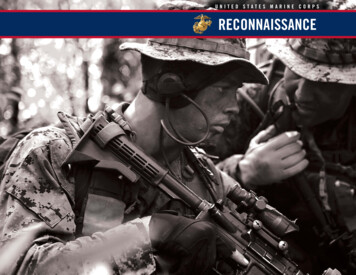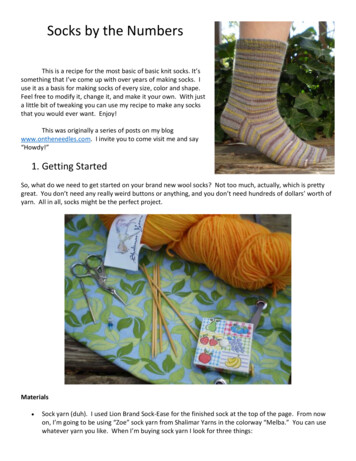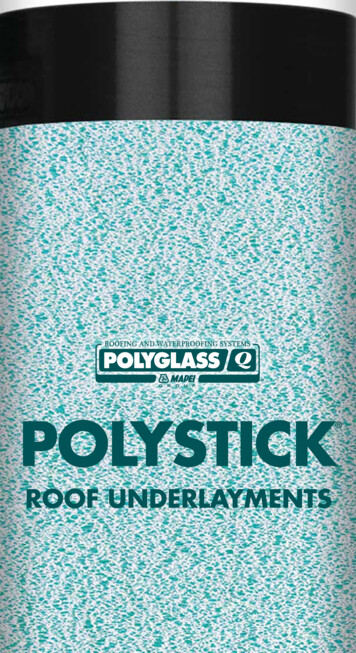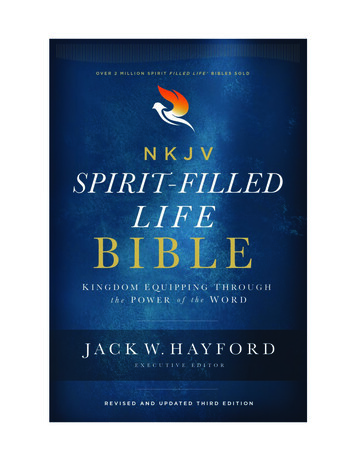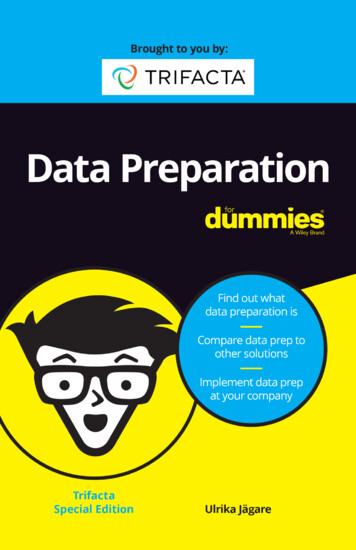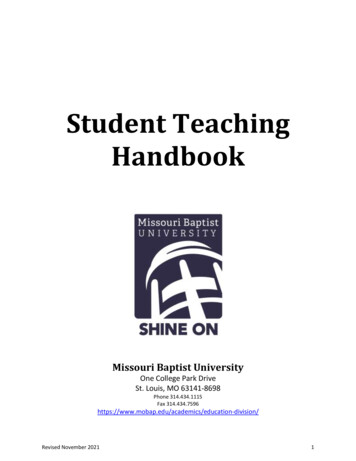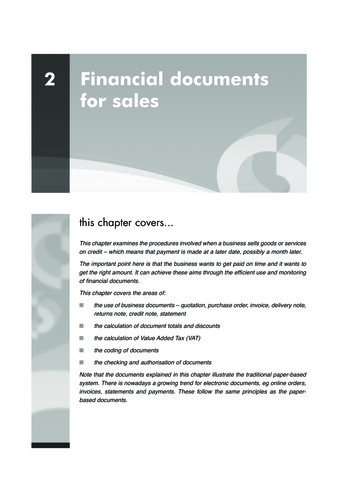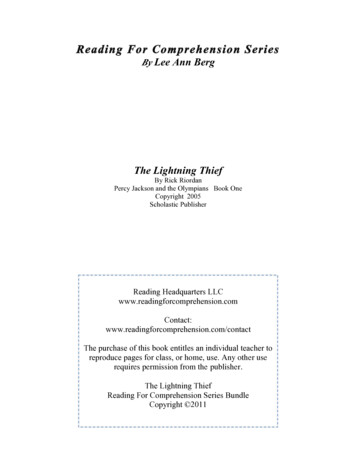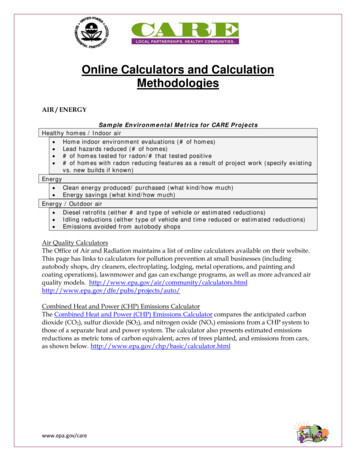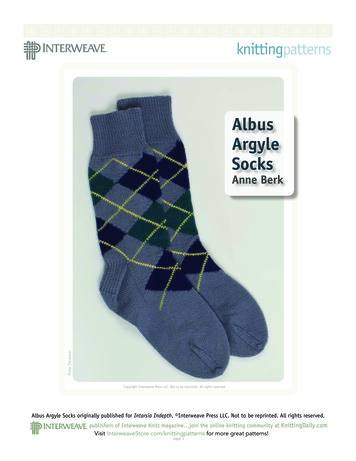
Transcription
knittingpatternsAlbusArgyleSocksAnne SwansonAnne BerkCopyright Interweave Press LLC. Not to be reprinted. All rights reserved.Albus Argyle Socks originally published for Intarsia Indepth. Interweave Press LLC. Not to be reprinted. All rights reserved.publishers of Interweave Knits magazine join the online knitting community at KnittingDaily.comVisit InterweaveStore.com/knittingpatterns for more great patterns!page 1
albus argyleSocksAnne BerkThis is a completely traditional argylesock, knit from the top down, with solidcolor heel and toe, traditional gusset and heelshaping. The only new aspect is that it is knitin the round, entirely seamless.Finished Size 8 (91 4 , 111 4)" foot circumfer-ence, and 101 4 (12, 141 2)" long from back ofheel to tip of toe. Foot length is adjustable.Yarn Louet North America Gems #1 SuperFine (100% merino wool; 185 yd [169 m]/13 4oz [50 g]): steel gray (MC) 2 (3, 3) skeins; teal(CC1), navy (CC2), willow (AC1), goldilocks(AC2) 1 skein each.Needles Size 2 (2.75 mm): long circular(cir) for magic-loop method or set of doublepointed (dpn).Notions Markers (m); tapestry needle.Gauge 32 sts and 44 rows 4" in patt.Notesare written to knit the Tlarge he instructionsdiamond motifs using intarsia in theround and to add the accent color linesduring finishing using duplicate stitch.Accent color lines can be knit at the sametime as the sock if preferred. If the accentcolor lines are all the same color, makethe accent color strand twice the lengththat you need, and begin knitting frommid-strand, carrying each end up acrossthe work, according to the chart. Thiseliminates two ends to weave in for eachaccent strand used.of each color by wind Wing indyarnbutterfliesaround the palm of the hand10-30 times. Now, remove the yarn fromthe hand, wind the loose end around themiddle of the loop a few times, then securewith a half-hitch loop (pretend you aremaking a e-wrap cast on, and place aroundthe butterfly, then pull securely). Youwill knit from the other end of the yarn,and pull out yarn a bit at a time. Alternatively, wind the same amount of yarn ontobobbins. Prepare 1 yarn butterfly or bobbin for eachdiamond, and 2 for the main color (MC).Each section will need its own source ofyarn. On Row 1, strand the MC behind thecontrast color (CC) diamonds. On Row 2,begin the 2nd strand of MC after workingfirst CC diamond.As you get more comfortable with thetechnique, lengthen the strands you areworking with to reduce the number ofends to weave in. As butterflies are usedand get messy, unwind them and re-wind,or just let hang loose and pull through tountangle. Store butterflies or preparedbobbins in a ziplock baggie, and carry withthe work instead of the balls of yarn. Morebutterflies and bobbins can be created aswork progresses.work, you will always createwhena loopturningas you link theNote on “loops”:yarn strands over each other, which marksthe end of the row. You should always haveone loop on the needle—but only one. Ifyou find that you have two loops next toeach other, one is a “false loop” that wascreated by not pulling the previous yarnthrough the loop when you finished theprevious row. The loop that you come tofirst on the needle is the false one. Pullthat yarn free from the real loop and youwill be good to go.Leave 4" tails when adding new yarn andwhen you come to the end of a strand, sothat ends can be woven in securely. Weaveends into the joined links, use a sharpneedle to weave the yarn into the links,not around them, for security. You shouldnot need any knots. When weaving, gentlyguide the needle through the fibers of thelinks, for 3-4 links, then return along thesame path. This will smush the fibers alltogether, and they aren’t going anywhere.You will not be sewing into any actuallyknitted sts, and nothing will show on thepublic side.Do not stop working at the end of a row.Without a loop in the knitting to tell youwhere you are, you will lose track of yourplace, and where to turn the work. Whenworking a loop, always turn the workafterward, and work at least a few stitches,creating a new loop. Placing a lockingmarker at the end of the row can also bea helpful guide when first learning thistechnique.When the strands get tangled, take amoment to untangle the yarn butterflies,or undo the butterflies and pull the entirestrand free. Generally, once you get a fewseparated, the rest untangle very easily.SockWith MC and cir needle or dpn, CO 64 (78,94) sts. Place marker (pm) and join in the rndbeing careful not to twist sts. Work k1, p1ribbing for 21 2 (3, 3)", or desired length. Nextrnd Knit, dec 0 (4, 4) sts evenly around—64(74, 90) sts rem. Remove m.Row 1: RS (Set-up row) Join CC1, leaving a 4"tail. With CC1, k1, drop CC1, cross MC overCC1, with CC1, k1 (0, 0), with MC, k30 (36,44), join CC2 leaving a 4" tail, k2 (1, 1), crossMC over CC2, with MC, k30 (36, 44), turn.Row 2: (WS) With MC Sl 1 pwise (the beg ofrow moves 1 st, you will work the sl st at theend of the row), take the strand of CC1 fromthe edge of the section to the right and bringover the top of MC that you were just knittingwith, note the “loop” of color CC1 at beg ofrow, where it crossed over to be locked by MC,with MC p28 (34, 42), pick up CC2 from underMC to link colors, with CC2, p4 (3, 3), join newMC, p1, cross CC2 over MC, with MC, p27 (33,41). The loop of CC1 signals the end of row.Pull on the loop to loosen enough yarn to purlwith. Put your butterfly of MC through theloop of CC1 to link the colors. With the yarnfrom the loop of CC1, p4 (3, 3) including slst of MC from beg of row. Gently tighten theloop to draw up the extra yarn, turn. Leavethe yarn butterflies or bobbins to the outsideof the work.Row 3: (RS) Sl 1 kwise from right needle leftneedle (beg of row moves over 1 st again, asyou increase the size of the diamond, sl st willbe worked at beg of Row 3), cross MC fromthe edge of the section to the right over top ofCC1, note the “loop” of MC at beg of row. WithCC1, k6 (5, 5), drop CC1, pick up MC from under CC1 to link, with MC, k26 (32, 40), pick upCC2 from under MC, with CC2, k6 (5, 5). Pickup MC from under CC2, with the yarn fromAlbus Argyle Socks originally published for Intarsia Indepth. Interweave Press LLC. Not to be reprinted. All rights reserved.publishers of Interweave Knits magazine join the online knitting community at KnittingDaily.comVisit InterweaveStore.com/knittingpatterns for more great patterns!page 2
the loop of MC, k26 (32, 40). Gently tightenthe loop to draw up the extra yarn, turn.Follow chart, cont to form diamonds, beingcareful to link yarn at each color change. Work31 (37, 45) rows of chart once, then reverseCC1 and CC2 and work chart again. Row 1 onsecond rep of chart will be a WS row.The heel flap needs to be knit on an evennumber of sts, in order for the heel st patt towork correctly. With diamond motif centeredbelow, arrange 32 (36, 44) sts on one needlefor the heel flap as foll. With MC, k17 (18,22) sts, ending at end of heel sts. Heel stsshould be centered above one diamond andinstep centered above the second diamond.Place next 32 (38, 46) st on holder for instep.Heel flap:Row 1: (WS) *Sl 1, p1; rep to end.Row 2: (RS) Sl 1, knit to end.Rep Rows 1 and 2: 15 (17, 21) more times,and then work Row 1 once more. Turn Heel:Row 1: (RS) K18 (20, 24), ssk, k1, turn.Row 2: (WS) Sl 1, p5, p2tog, p1, turn.Row 3: Sl 1 pwise, knit to 1 st before gap, ssk,diamond only, knit across all instep sts inpatt, centering the new diamond on top of theprevious one, pm, pick up and knit 16 (18, 22)sts on right edge of the flap, pm. Knit to motifedge, turn work, make loop and purl 1 roweven, loop yarn, finishing row, turn. GussetDec row (RS) Knit to m, sl m, k1, ssk, work inpatt to 3 sts before m, k2tog, k1—2 sts dec’d.Working in St st with MC over foot and gusset, and argyle patt over instep, rep Dec rowevery RS row 8 (9, 11) more times—64 (74,90) sts rem.Size note: If the ankle is large, but the footis a smaller size, continue to decrease gussetuntil the correct stitch count for the foot.Work the foot for the smaller size.When finished with argyle chart, work withMC only for remainder of sock, in the rnd.Cont working even in St st until the footcovers the little toe, or 71 2 (81 2, 9)" from heel.Lengthen or shorten the foot here to adjustfor individual size. Toe: Dec rnd On needle1, (instep) k1, ssk, knit to end; on needle 2(instep) knit to last 3 sts, k2tog, k1; on needle3 k1, ssk, knit to last 3 sts, k2tog, k1—4 stsdec’d. Next rnd Knit. Rep last 2 rnds 7 (9, 11)more times—32 (34, 42) sts rem. Then repDec rnd every rnd 4 (4, 5) times—16 (18, 22)sts rem.FinishingUse Kitchener st (see page 5) to graft toeseam. Using Argyle chart as a guide and duplicate st, add accent lines using any combination of AC1 and AC2.Anne Berk was certified by TKGA as a MasterKnitter in 2003. She has written patternsand articles for many publications, includingPiecework, Sockupied, ColorKnit and TwistCollective. Anne is also an optometrist inprivate practice in Portland, OR, is a distancerunner and a busy wife and mom.RISK-FREEk1, turn.Row 4: Sl 1 pwise, purl to 1 st before gap,p2tog, p1, turn.Work Rows 3 and 4 until all sts have beenworked. With RS facing, knit heel sts, pickup and knit 16 (18, 22) sts on the left edge ofthe flap, picking up into the slipped sts, pm.Starting on Row 1 of chart and working centerTRIAL OFFERInterweave Knits IS A MUST-HAVEFOR THOSE WHO LOVE TO KNIT!interweave.com/go/kdiwkAbbreviationsbeg beginning; begin; beginsbetbetweenBObind offCCcontrasting colorcmcentimeter(s)cncable needleCOcast oncontcontinue(s); continuingdec(s)decrease(s); decreasingdpn double-pointed needle(s)follfollowing; followsggram(s)incincrease(s); increasingkknitk1f&b knit into front and back ofsame stk2tog knit two stitches togetherkwiseknitwiseLCleft crossm(s)marker(s)MCmain colormmmillimeter(s)M1make one (increase)M1R (L) make one right (left)ppurlp1f&b purl into front and back ofsame stp2togpurl two stitches togetherpatt(s) pattern(s)pmplace markerpssopass slipped stitch overp2sso pass two slipped stitchesoverpwisepurlwiseRCright crossremremain(s); remainingreprepeat; repeatingrev St st reverse stockinette stitchribribbingrnd(s)round(s)RSright siderev screverse single crochetscsingle crochetskskipslslipsl st slip stitch (sl 1 st pwiseunless otherwise indicated)ssk slip 1 kwise, slip 1 kwise,k2 sl sts tog tbl (decrease)ssp slip 1 kwise, slip 1 kwise, p2sl sts tog tbl (decrease)st(s)stitch(es)St ststockinette stitchtblthrough back looptogtogetherWSwrong sidewybwith yarn in backwyfwith yarn in frontyoyarn over* repeat starting point(i.e., repeat from *)* * repeat all instructions between asterisks( ) alternate measurementsand/or instructions[ ] instructions that are to beworked as a group aspecified number of timesAlbus Argyle Socks originally published for Intarsia Indepth. Interweave Press LLC. Not to be reprinted. All rights reserved.publishers of Interweave Knits magazine join the online knitting community at KnittingDaily.comVisit InterweaveStore.com/knittingpatterns for more great patterns!page 3
Large, size 111/4"4543413937353331292725232119171513119753190 stsMedium, size ing point13119753174 stsAlbus Argyle Socks originally published for Intarsia Indepth. Interweave Press LLC. Not to be reprinted. All rights reserved.publishers of Interweave Knits magazine join the online knitting community at KnittingDaily.comVisit InterweaveStore.com/knittingpatterns for more great patterns!page 4
Small, size 8"312927252321191715131197KeyMCCC1CC2AC1AC2turning point53164 stsKitchener StitchBring threadedneedle through frontstitch as if to purl andleave stitch on needle.Step 2: Bring threadedneedle through backstitch as if to knit and leave stitch on needle.Step 3: Bring threaded needle through first front stitchas if to knit and slip this stitch off needle. Bring threaded needle through next front stitch as if to purl andleave stitch on needle.Step 4: Bring threaded needle through first back stitchas if to purl (as illustrated), slip this stitch off, bringneedle through next back stitch as if to knit, leave thisstitch on needle.Repeat Steps 3 and 4 until no stitches remain onneedles.Step 1:Illustration by Gayle FordAlbus Argyle Socks originally published for Intarsia Indepth. Interweave Press LLC. Not to be reprinted. All rights reserved.publishers of Interweave Knits magazine join the online knitting community at KnittingDaily.comVisit InterweaveStore.com/knittingpatterns for more great patterns!page 5
44), join CC2 leaving a 4" tail, k2 (1, 1), cross MC over CC2, with MC, k30 (36, 44), turn. Row 2: (WS) With MC Sl 1 pwise (the beg of row moves 1 st, you will work the sl st at the end of the row), take the strand of CC1 from the edge of the section to the right and bring over t

